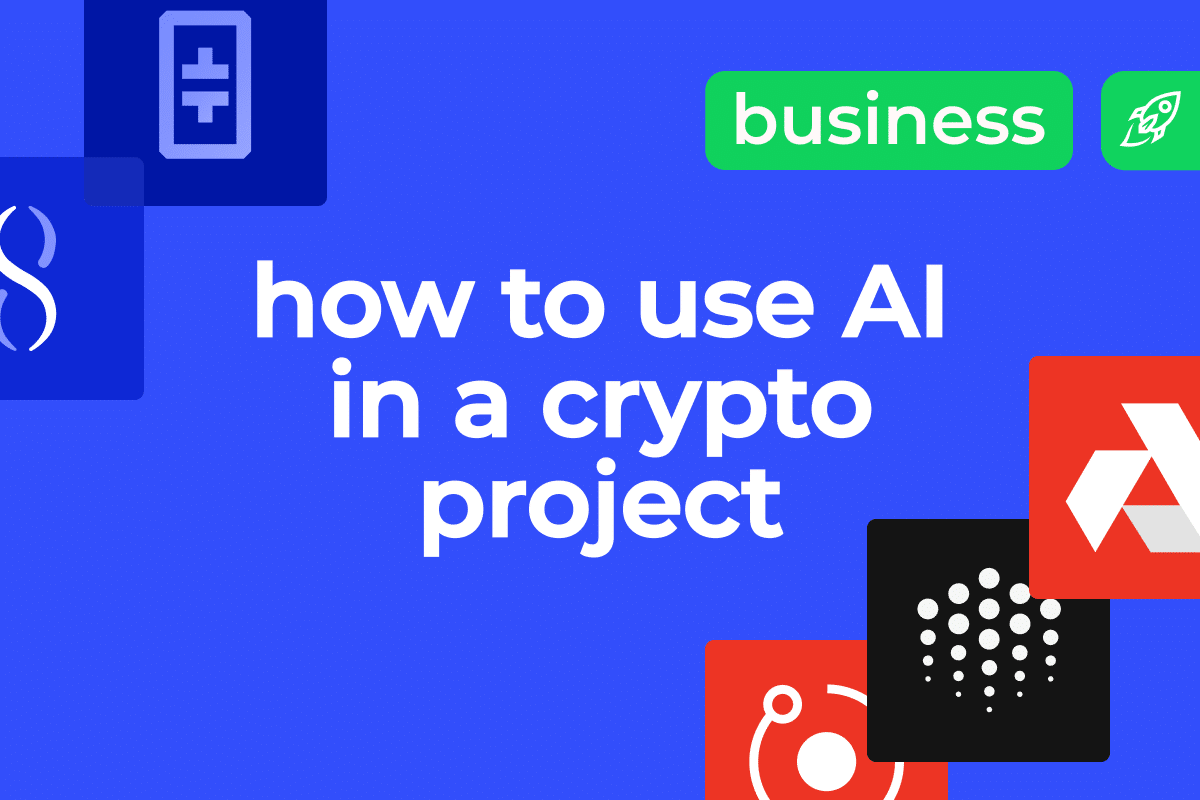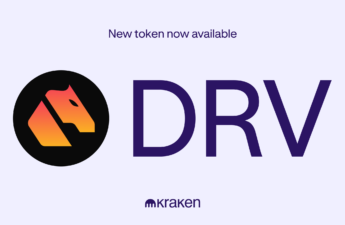Web3 and AI (Artificial Intelligence) have both been a revolutionary development offering intelligent solutions that can transform various industries. While Web3 introduces decentralized platforms, tokens, and transparent user ownership, AI brings the capacity for automation, decision-making, and data processing at an unparalleled scale. Together, these technologies are laying the groundwork for a more efficient, transparent, and intelligent digital world.
This article dives into how AI can be integrated into crypto and Web3 projects, focusing on AI-driven smart contracts, data analysis, and enhanced security features. The potential benefits and challenges of using AI within a decentralized ecosystem are also explored, along with real-world examples of projects already making the most out of these technologies.
How AI Fits into Web3
Web3 represents the third generation of World Wide Web services characterized by decentralization, blockchain technologies, and greater user ownership over content and data. It’s all about empowerment: putting control back into the hands of users by allowing them to own and monetize their digital assets and identities.
AI can revolutionize how Web3 platforms operate by enhancing the scalability, functionality, and security of decentralized systems. The core value of AI in Web3 is its ability to process vast amounts of data efficiently and make decisions or predictions in real time. By doing so, it adds an intelligence layer to blockchain infrastructure.
Enhanced Smart Contracts. AI can automate the execution and optimization of smart contracts. Traditionally, smart contracts rely on pre-programmed conditions, but with AI, they can adapt based on dynamic data, making the ecosystem more efficient and responsive.
Data Analysis. Blockchain networks generate enormous amounts of data, and AI is uniquely positioned to extract insights. AI can analyze on-chain and off-chain data to make predictive models, optimize consensus algorithms, and enhance blockchain performance.
Security Features. AI can be integrated into decentralized systems to detect suspicious activities and prevent fraud. Decentralized environments obviously operate without central authorities overseeing security, so this feature is especially important.
5 Applications of AI in Crypto Projects
Now, let’s take a closer look at how you can use AI in your crypto project.
Data Analysis
One of AI’s key strengths is its ability to process large volumes of data quickly. In the context of Web3, AI can analyze blockchain transaction data to improve decision-making, detect anomalies, and identify potential security threats. As blockchain networks grow, decentralized AI can play an important role by processing and analyzing heaps of data in a trustless, efficient way, allowing for greater scalability without compromising the integrity of the system.
AI-generated data insights can also help improve user experience by offering tailored services and content recommendations based on users’ on-chain activities. This can include personalized NFT suggestions or dApp recommendations.
Security Enhancements
AI enhances security in Web3 by identifying and mitigating potential threats before they can harm the system. For example, AI can detect unusual transaction patterns of fraudulent behavior, such as wash trading or bot attacks on decentralized exchanges.
In addition to fraud detection, AI can strengthen zero-knowledge proofs, which are crucial in verifying transactions without exposing user data. This enhances privacy while maintaining the security of blockchain-based transactions.
AI can also help to automate compliance and regulatory monitoring. AI can assist businesses in complying with constantly evolving regulations in the crypto space by automatically monitoring and analyzing relevant legal requirements. This includes detecting non-compliant transactions, flagging suspicious activities for further investigation, and ensuring that decentralized platforms adhere to anti-money laundering (AML) and know-your-customer (KYC) guidelines. By automating these processes, businesses can mitigate legal risks and reduce the operational burden of manually staying up-to-date with regulatory changes
AI-Driven Smart Contracts
AI has the potential to transform smart contracts by enabling them to adapt in real time based on new data or external events. For example, in decentralized finance (DeFi), AI can monitor market conditions and automatically adjust lending rates or collateral requirements according to current market dynamics.
AI can also help optimize transaction efficiency by analyzing patterns and predicting network congestion. Moreover, AI could enhance human intelligence in managing disputes by using large language models to interpret contract terms and resolve ambiguities.
AI-Powered Customer Support and User Engagement
Another practical application of AI in crypto and Web3 businesses is AI-powered customer support and user engagement. AI can improve user experience by providing instant, personalized support through chatbots and virtual assistants. These AI-driven tools can handle a wide range of queries, from helping users navigate decentralized platforms to troubleshooting technical issues.
AI in NFTs and Metaverse
In the world of NFTs and the metaverse, AI is already making an impact. AI-generated content can help artists and developers create dynamic NFTs that evolve over time based on interactions or external data. For instance, AI can create virtual items and avatars that change in sync with user preferences or behavior within a blockchain-based metaverse.
With AI, the creation of immersive, intelligent environments within virtual worlds is no longer a hardship. Users should be able to interact with AI-generated characters or participate in AI-driven experiences, which brings new levels of personalization and engagement to the metaverse, making user experiences more intuitive and interactive.
Driving WEB3 Business?
Join Changelly’s Business Community Newsletter for essential market insights & updates. No longreads, only valuable data
Benefits of Using AI in Web3 Projects
Well, now that we’ve looked at some of the possible applications of AI in Web3 projects, let’s answer the next logical question: Why use it in the first place?
Efficiency and Automation
AI helps automate complex processes in Web3, such as identity verification and transaction processing. For example, AI can streamline transactions by automating validation, reducing human error, and speeding up the process. In decentralized finance, AI can dynamically adjust lending parameters and optimize liquidity pools based on real-time market data.
The integration of AI can also reduce reliance on multiple parties for verification and settlement, allowing for faster, more efficient transactions. This not only saves time but reduces costs for users and developers alike.
Personalization and User Experience
One of AI’s most powerful features is its ability to tailor content and recommendations to individual users. By analyzing user-generated content and on-chain activity, AI can provide personalized experiences that cater to each user’s preferences and habits. This can include recommending specific NFTs, DeFi protocols, or dApps that align with a user’s investment profile.
For platforms in the Web3 space, AI-driven interfaces are becoming more intuitive, allowing for smoother and more personalized user interactions. These personalized experiences lead to higher engagement and better user retention.
Cost Reduction
AI can help reduce the costs associated with Web3 development, particularly in the area of computing power. The tokenization of decentralized computing resources can allow developers to access the computational power they need to train large language models or run complex AI algorithms at a fraction of the traditional cost.
By utilizing idle computing resources within a distributed network, AI projects can lower the overall cost of infrastructure while still meeting the computational needs of AI-driven applications.
Challenges of Combining AI and Web3
Even though AI can be a huge boon to Web3 businesses, it is not without its challenges and risks.
Data Privacy and Ownership
One of the challenges of integrating AI into Web3 is balancing the need for data with the decentralized, privacy-focused nature of blockchain technology. AI requires large datasets to function optimally, but Web3 promotes user control over data and privacy. This creates a tension between the need for data access and the right to data ownership.
Computational Power
Training and running AI models, especially large language models, requires substantial computing resources. Although decentralized computing networks can provide access to idle hardware, these networks may not always meet the performance requirements of more advanced AI tasks. The demand for computational power continues to grow, making it a challenge for decentralized networks to keep pace.
Centralization vs. Decentralization
AI models often rely on centralized systems to process data and learn from it, which runs counter to Web3’s decentralized ethos. Achieving true decentralization while harnessing the benefits of AI is a challenge that the Web3 community continues to face. Projects need to explore how AI can operate in a decentralized manner without sacrificing the benefits of either technology.
Examples of AI-Driven Web3 Projects
Several projects are already using AI to improve their decentralized operations, automate processes, and drive innovation. Here are a few examples that illustrate how AI is transforming Web3 businesses:
Augur: A decentralized prediction market platform that uses AI to enhance forecasting by analyzing large datasets. Augur allows users to create and participate in prediction markets, where AI helps in processing data to make more accurate forecasts about real-world events, such as elections or financial trends. This use of AI improves the platform’s decision-making capabilities, giving it a competitive edge in prediction accuracy.
Ocean Protocol: Ocean Protocol focuses on decentralized data sharing and monetization, using AI to enable secure and efficient data exchanges. By applying AI to data analysis and access, the platform helps businesses and individuals monetize their data assets while ensuring privacy and security through blockchain technology. Ocean Protocol also allows companies to access high-quality, verified data to optimize their operations—that’s how they support AI-driven solutions in supply chain management.
Fetch.ai: Fetch.ai is a decentralized platform that combines blockchain and AI to create autonomous economic agents. These agents can perform tasks such as data retrieval, supply chain management, and infrastructure optimization—without human intervention. The platform uses machine learning to enable these agents to interact in complex decentralized environments, making decisions in real time based on dynamic data.
Want to see more examples? Here are some other AI companies.
Future Trends for Web3 and AI
As both AI and Web3 technologies are still in the early stages of development, future trends will likely focus on deepening the integration between them. Here are some potential advancements:
AI-Powered Decentralized Governance. One of the most exciting future trends is the use of AI to optimize governance in decentralized autonomous organizations (DAOs). AI could analyze voting patterns, user sentiment, and other decentralized data to improve decision-making and enhance transparency. This would allow governance models to adapt to the needs of the community dynamically and ensure fair, efficient processes.
Natural Language Processing in User Interfaces. As Web3 platforms evolve, the integration of natural language processing (NLP) might lead to more intuitive user interfaces. NLP can allow users to interact with decentralized applications through conversational agents, making Web3 platforms easier to use for a broader audience. This will likely drive adoption as these interfaces become more accessible to users who may not be familiar with the technicalities of blockchain technology.
Supply Chain Management. AI-driven optimization in supply chain management is another promising area. Decentralized platforms combined with AI could revolutionize supply chain tracking, ensuring more efficient and transparent operations by automating processes like inventory management, logistics, and supplier verification.
Final Thoughts
AI and Web3 represent a powerful combination of emerging technologies that are transforming how businesses operate in the decentralized ecosystem. AI-driven smart contracts, enhanced data analysis, and improved security offer Web3 projects a wealth of opportunities for optimization and innovation. However, challenges such as maintaining data privacy, meeting computational demands, and balancing decentralization with AI’s centralized nature must be addressed as the two fields evolve.
The future of AI and Web3 is brimming with potential, from increasingly high-quality AI-generated content and decentralized governance to seamless, intuitive user interfaces powered by natural language processing. Developers and innovators in the space have a unique opportunity to explore how these technologies can intersect and push the boundaries of what is possible in the decentralized digital world.
If you are developing a crypto or Web3 project, now is the time to embrace AI capabilities and explore how they can enhance your operations, improve user experiences, and offer competitive advantages.
Disclaimer: Please note that the contents of this article are not financial or investing advice. The information provided in this article is the author’s opinion only and should not be considered as offering trading or investing recommendations. We do not make any warranties about the completeness, reliability and accuracy of this information. The cryptocurrency market suffers from high volatility and occasional arbitrary movements. Any investor, trader, or regular crypto users should research multiple viewpoints and be familiar with all local regulations before committing to an investment.
Source: https://changelly.com/blog/web3-ai-how-to-use-artificial-intelligence-in-a-crypto-project/




